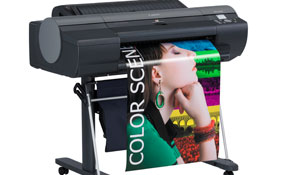
Under pressure commercial printers are increasingly looking at related markets, primarily wide format and packaging, as potential growth opportunities, as print margins remain tight, and in many cases unsustainable.
Commercial printers have witnessed the inexorable rise of the wide format market over the past 15 years since digital systems came into play, And with Charmaine Moldrich, CEO of the Outdoor Media Association believing that the current $600m Australian outdoor media market should be $1bn to be on the same per-capita level as the US and UK, there is plenty of growth left yet in wide format printing.
Printers are increasingly realising that they have everything they need to get into the market, apart from the output unit, and they may even have that if they use a digital proofing solution. Crucially they have the customers, as many of their existing customers will buy wide format. They also have the digital file management and colour management skills, unlike many sign shop owners who have been working in an analogue world.
Russell Cavenagh, sales and marketing director at nationwide solutions supplier DES says ‘at least half’ of all commercial printers are now looking at either wide format or packaging. He says, “It is not as easy as plugging in a printer and away you go, nothing ever is, but there are no inherent reasons why commercial printers cannot enter either of these markets.”
Printers looking to enter wide format will have plenty to look at in the next cojupem of months, with Visual Impact Image Expo running at the same time and same place as PrintEx in Sydney May 13-15 and then Fespa taking place the following week in Cologne, Germany. Fespa is the world’s biggest wide format show, with some 70 exhibitors taking up 62,000sqm, and showing not only kit but the latest developing applicaiotns, such as textiles and interior decor.
Packaging has long been touted as a rich harvest field for commercial printers, not least because it is less susceptible to the threat of the internet, and because a growing population should by definition mean more food, toys and perfumes are required. Growth in packaging is less spectacular than wide format, however growth is taking place every year, and with fragmentation of demographics, shorter product lifecycles and increased levels of promotion short run packaging in particular is touted as a boom area.
Comment below to have your say on this story.
If you have a news story or tip-off, get in touch at editorial@sprinter.com.au.
Sign up to the Sprinter newsletter


